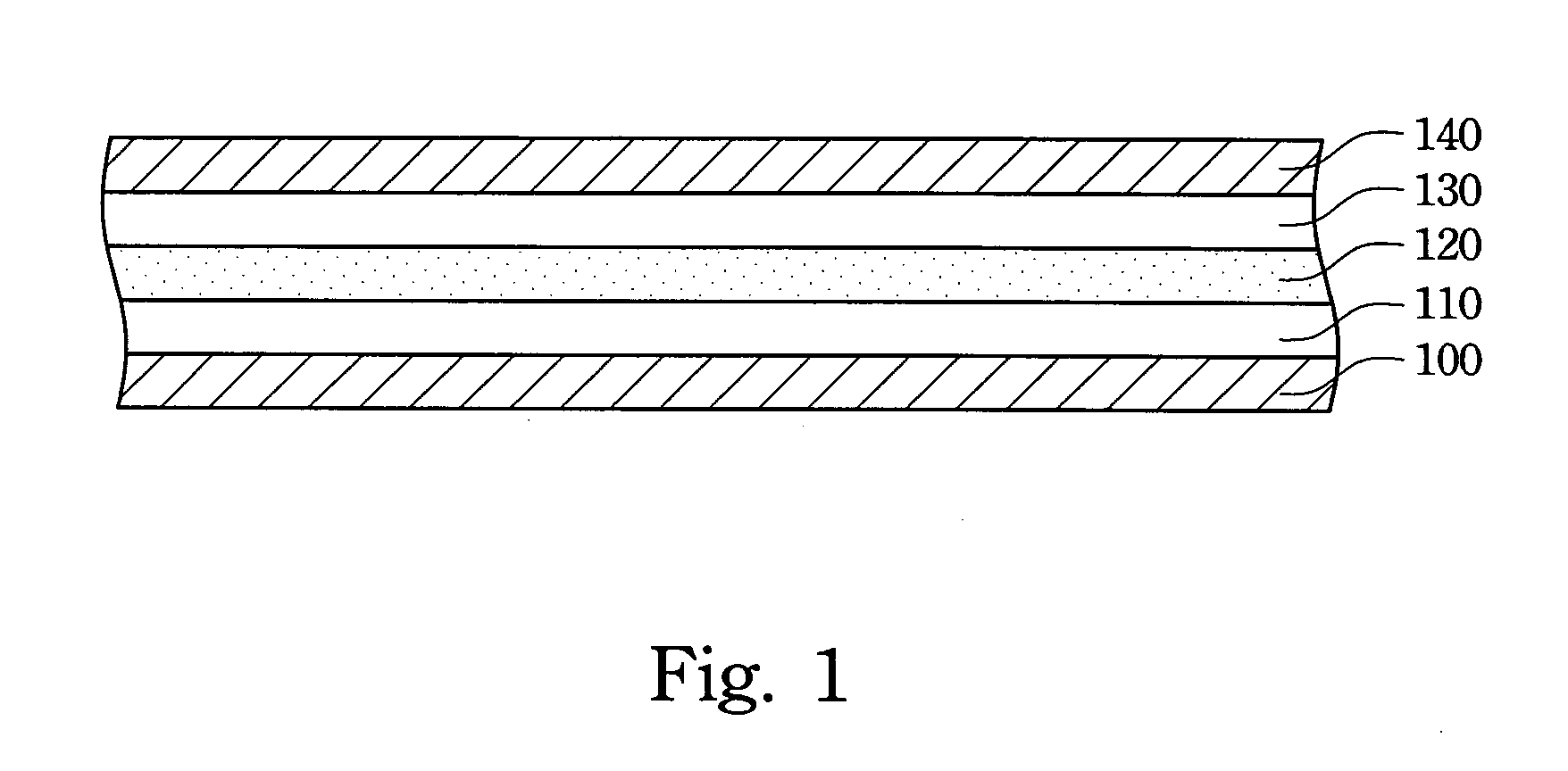Polyimide based flexible copper clad laminates and method of producing the same
a flexible copper clad, polyimide technology, applied in the direction of thermoplastic polymer dielectrics, adhesive processes with surface pretreatment, synthetic resin layered products, etc., can solve the problems of cross talk, voltage noise, cross talk, etc., to reduce production costs, simplify manufacturing processes, and control the size stability of the effect of siz
- Summary
- Abstract
- Description
- Claims
- Application Information
AI Technical Summary
Benefits of technology
Problems solved by technology
Method used
Image
Examples
Embodiment Construction
[0019] Reference is made to FIG. 1, which shows a cross-sectional side view of a polyimide based flexible copper clad laminate of one preferred embodiment of the present invention. The polyimide based flexible copper clad laminate comprises a first copper foil 100, a first thermoset polyimide layer 110 located on the first copper foil 100, a thermoplastic polyimide layer 120 located on the first thermoset polyimide layer 110, a second thermoset polyimide layer 130 located on the thermoplastic polyimide layer 120, and a second copper foil 140 located on the second thermoset polyimide layer 130.
[0020] The method for producing the aforementioned polyimide based flexible copper clad laminate comprises the following steps. In step a), a thermoset polyimide layer is formed on the copper foil. N-methyl-2-pyrrolidone, as a solvent, is added to a reaction tank at 35-50° C. Then, p-phenylenediamine and oxydianiline are added to the reaction tank with stirring, wherein the molar ratio of the ...
PUM
| Property | Measurement | Unit |
|---|---|---|
| molar ratio | aaaaa | aaaaa |
| molar ratio | aaaaa | aaaaa |
| thickness | aaaaa | aaaaa |
Abstract
Description
Claims
Application Information
 Login to View More
Login to View More - R&D
- Intellectual Property
- Life Sciences
- Materials
- Tech Scout
- Unparalleled Data Quality
- Higher Quality Content
- 60% Fewer Hallucinations
Browse by: Latest US Patents, China's latest patents, Technical Efficacy Thesaurus, Application Domain, Technology Topic, Popular Technical Reports.
© 2025 PatSnap. All rights reserved.Legal|Privacy policy|Modern Slavery Act Transparency Statement|Sitemap|About US| Contact US: help@patsnap.com


